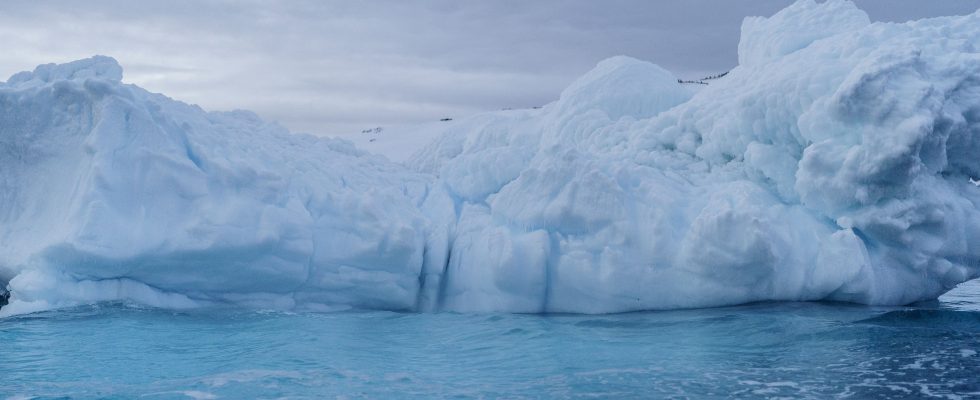The world’s largest piece of ice is now on the move, and it’s not wasting any time. Friday November 24, several scientific experts told the British press agency Reuters that the A23a iceberg was now moving rapidly off the coast of Antarctica.
A piece of ice measuring 4,000 square kilometers, the size of the island of Majorca, which drifts with the winds and sea currents. Currently off the coast of the Trinity Peninsula, at the very end of the long arm of Antarctica which points towards South America and Cape Horn, A23a had nevertheless remained immobile for 37 years, before you started moving a few months ago.
The former site of a USSR scientific base
However, A23a was not always so vagabond, recalls Reuters. Initially, this iceberg was part of one of the gigantic sheets of ice attached to the rocky ground of Antarctica: the Filchner-Ronne platform. The area corresponding to this drifting piece was even considered stable enough for the Soviet Union to set up a scientific research station there in 1976: Druzhnaya I. But in 1986, the ice broke: A23a gradually detached itself from its platform and began to drift across the Antarctic Wendell Seacarried by strong winds and currents towards the north.
The Soviet scientific station was urgently moved by helicopter a year later, reported at the time the American daily New York Times. But the new iceberg A23 ended up stopping: its submerged part hit the bottom of the Wendell Sea and came to rest. Until it started moving again in 2020, then completely broke free a few months ago and started drifting towards its current position.
Questioned by Reuters, British glaciologist Oliver Marsh judges that it “probably became slightly thinner over time and gained a little extra buoyancy which allowed it to take off from the ocean floor”. A phenomenon linked to the rapid warming of the world’s oceans? Within the British Antarctic Survey (BAS) research body, “the consensus is that the time was right”, says researcher Andrew Fleming at BBC.
Risk of collision with South Georgia
There remains one unanswered question: how far will these 4,000 square kilometers of ice drift? And with what consequences? Which seems likely at the moment, according to Reutersthis is what this piece of ice gradually floats off the coast of the Southern Ocean, which surrounds Antarctica, and joins its circumpolar current. This immense sea current encircling the continent should then guide the iceberg towards an area east of Cape Horn, where numerous fragments of the Antarctic ice end up stationed: the aptly named “iceberg alley“, the video below illustrates the training.
Problem: an island is located in this famous alley, South Georgia. An almost uninhabited British rock… And smaller than the A23a iceberg. The risk would therefore be that the largest piece of drifting ice in the world could wash up near the shallow coasts of South Georgia. Such a situation could both disrupt the terrestrial ecosystem of “the millions of seals, penguins and other seabirds that breed on the island”, indicates the BBC, but also cut off access to part of the surrounding waters where they feed. A threat already avoided by another iceberg in 2020.
It is also possible that A23a will continue its journey in the coming weeks, “an iceberg of this size [ayant] the potential to survive for a long time in the Southern Ocean”, estimates British glaciologist Oliver Marsh to Reuters. At the risk, according to him, of going even further north, “towards South Africa, where it could disrupt navigation “.
Regardless of its course, the gigantic chunk of ice will eventually melt in these warmer waters. It would then release “the mineral dust which was incorporated into their ice […]a source of nutrients for the organisms that constitute the basis of oceanic food chains”, recalls the BBC.
